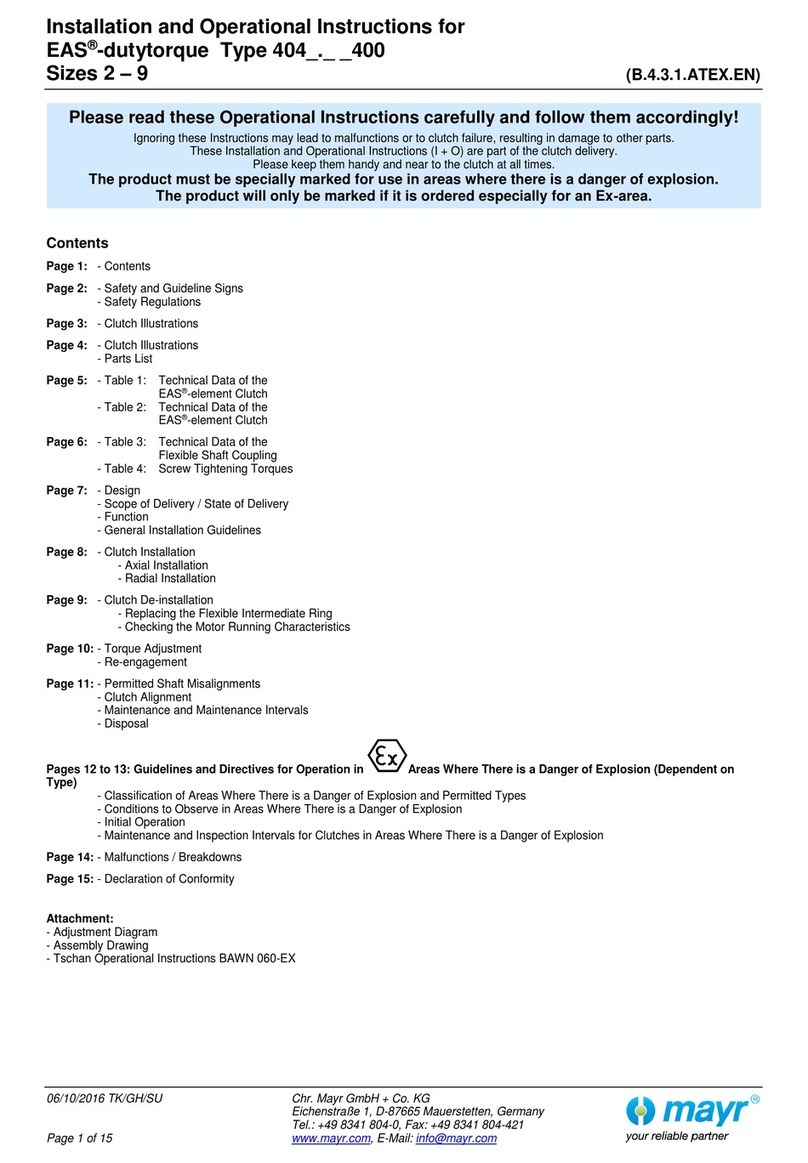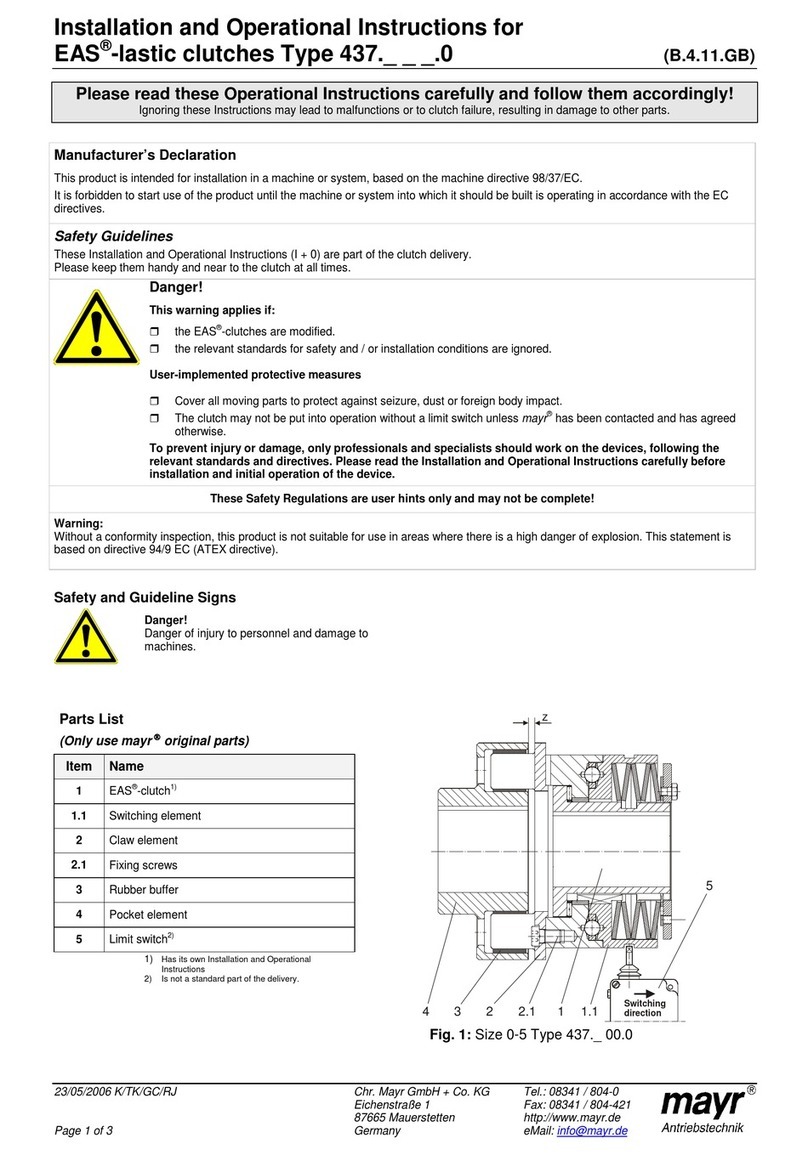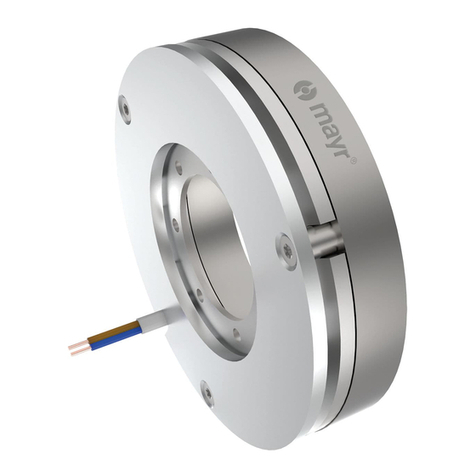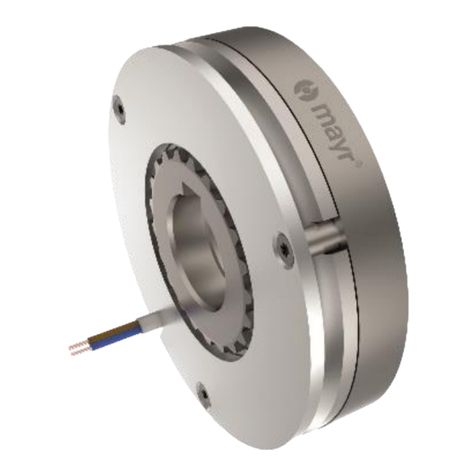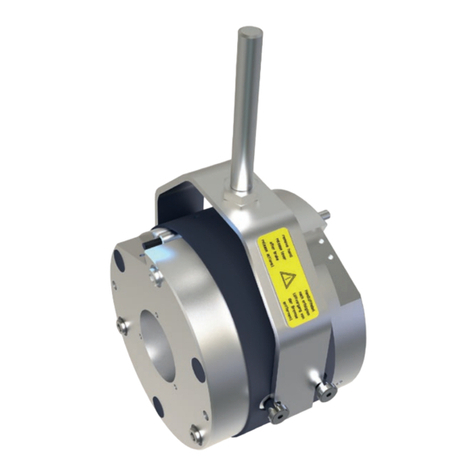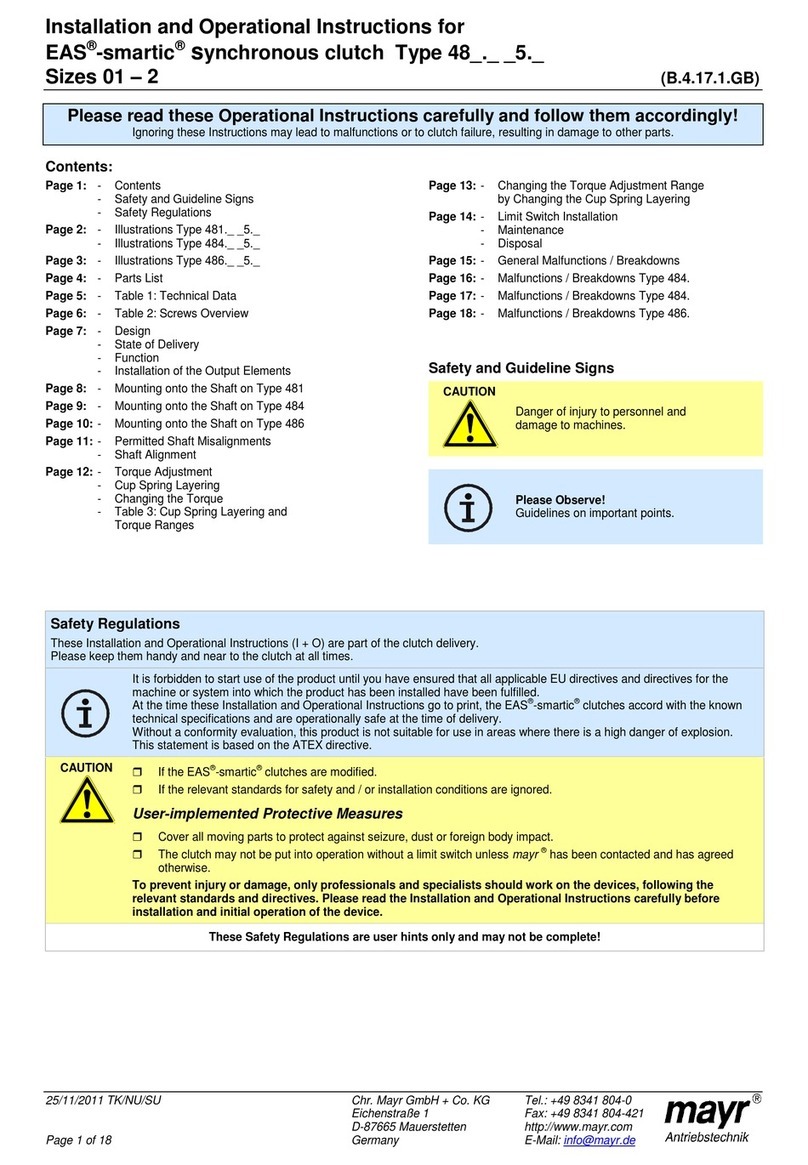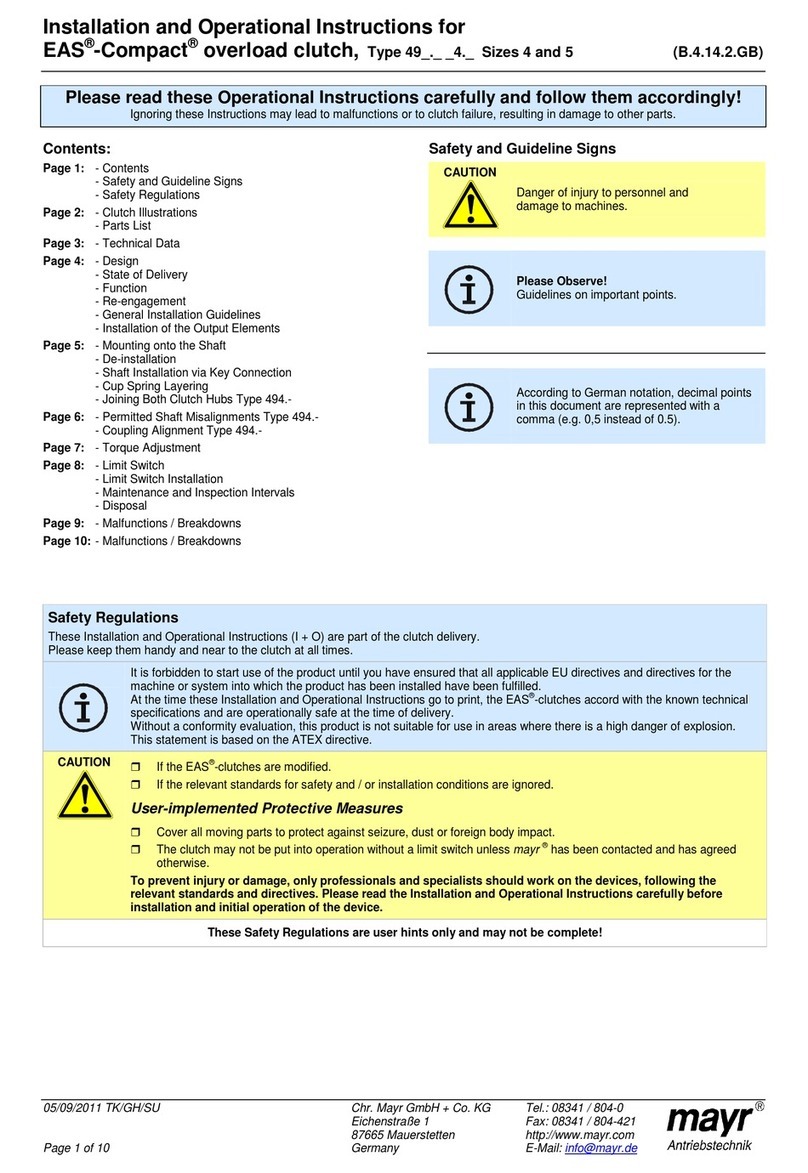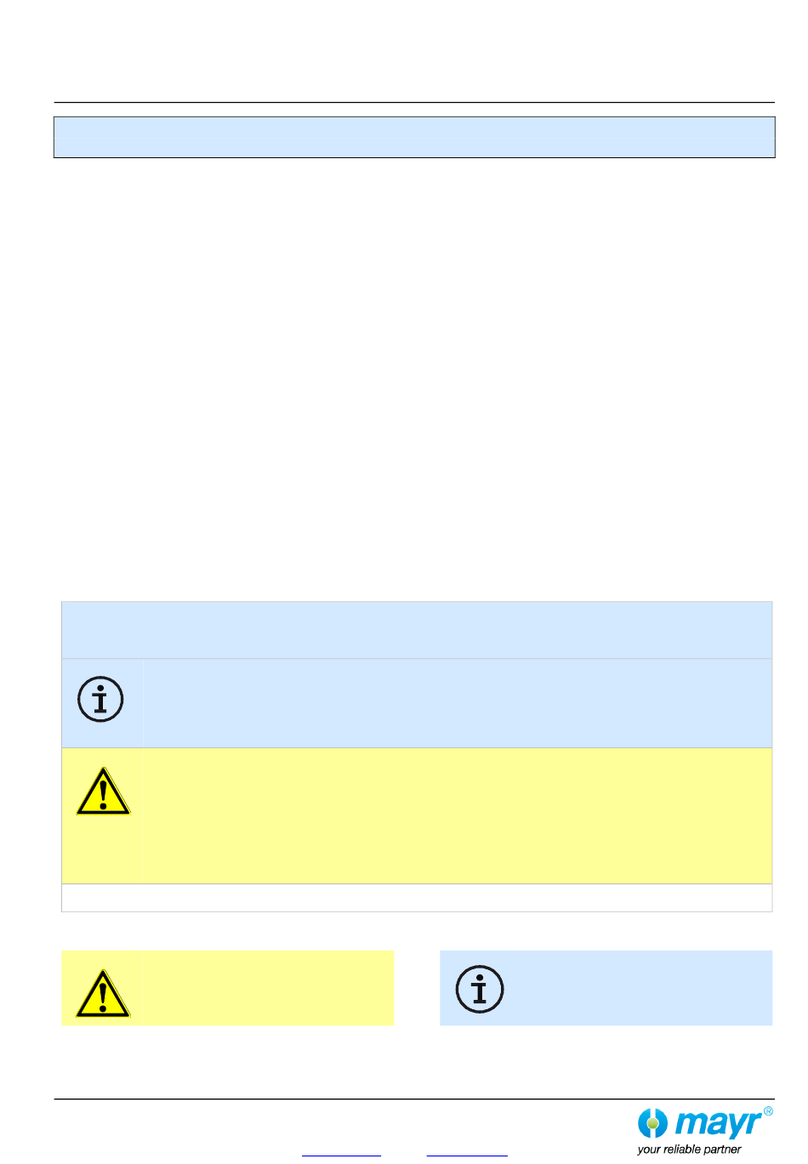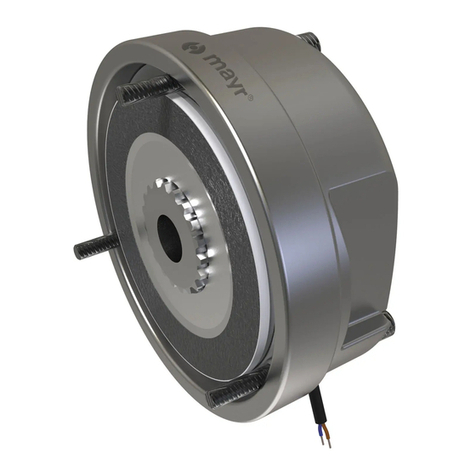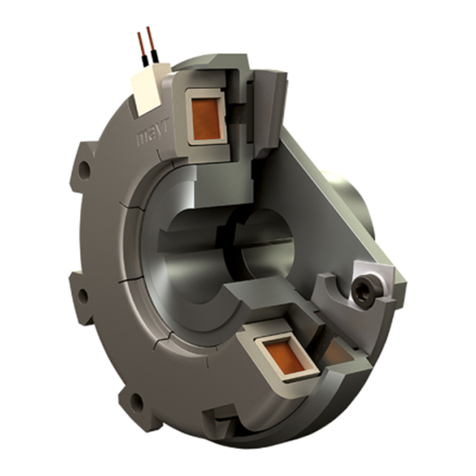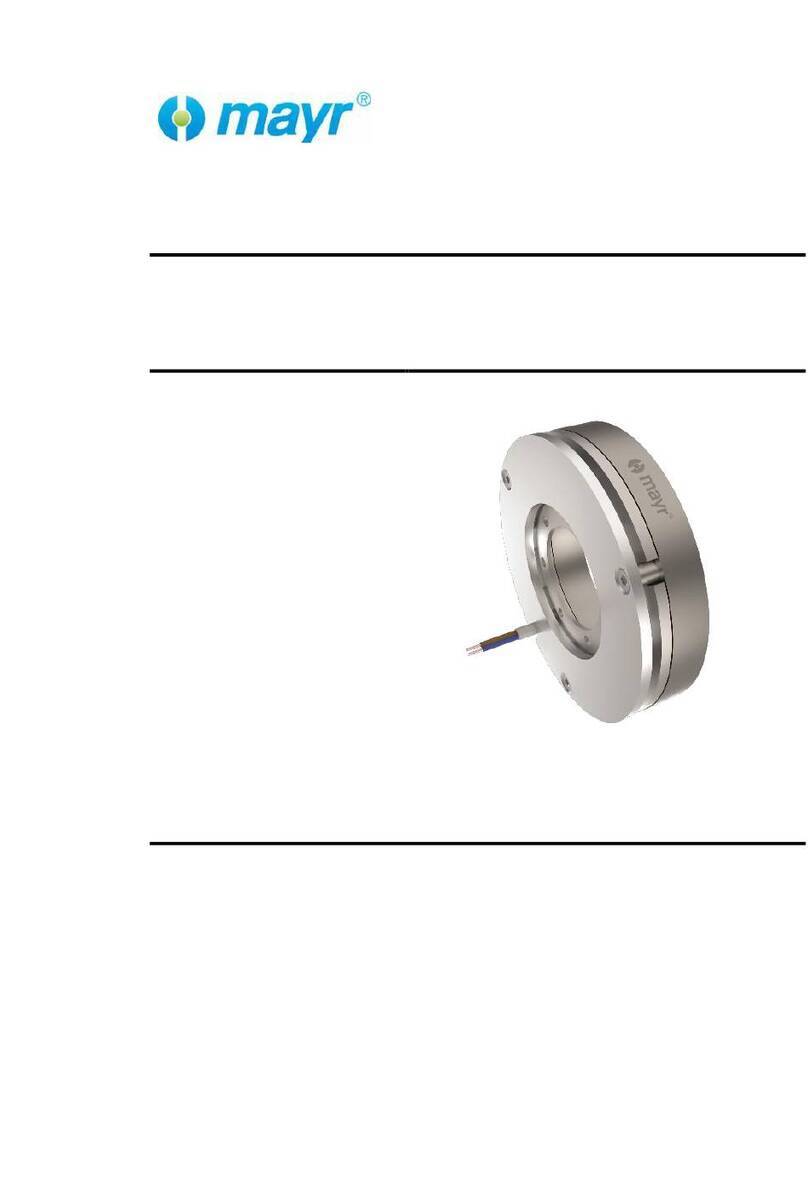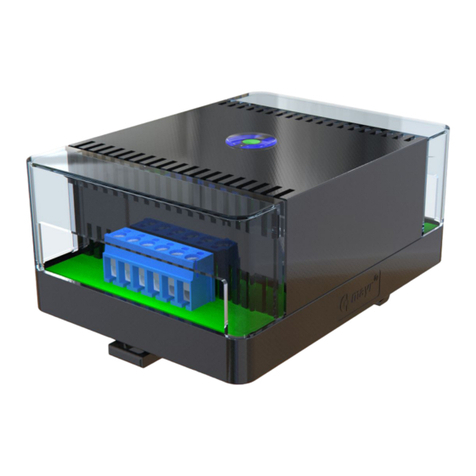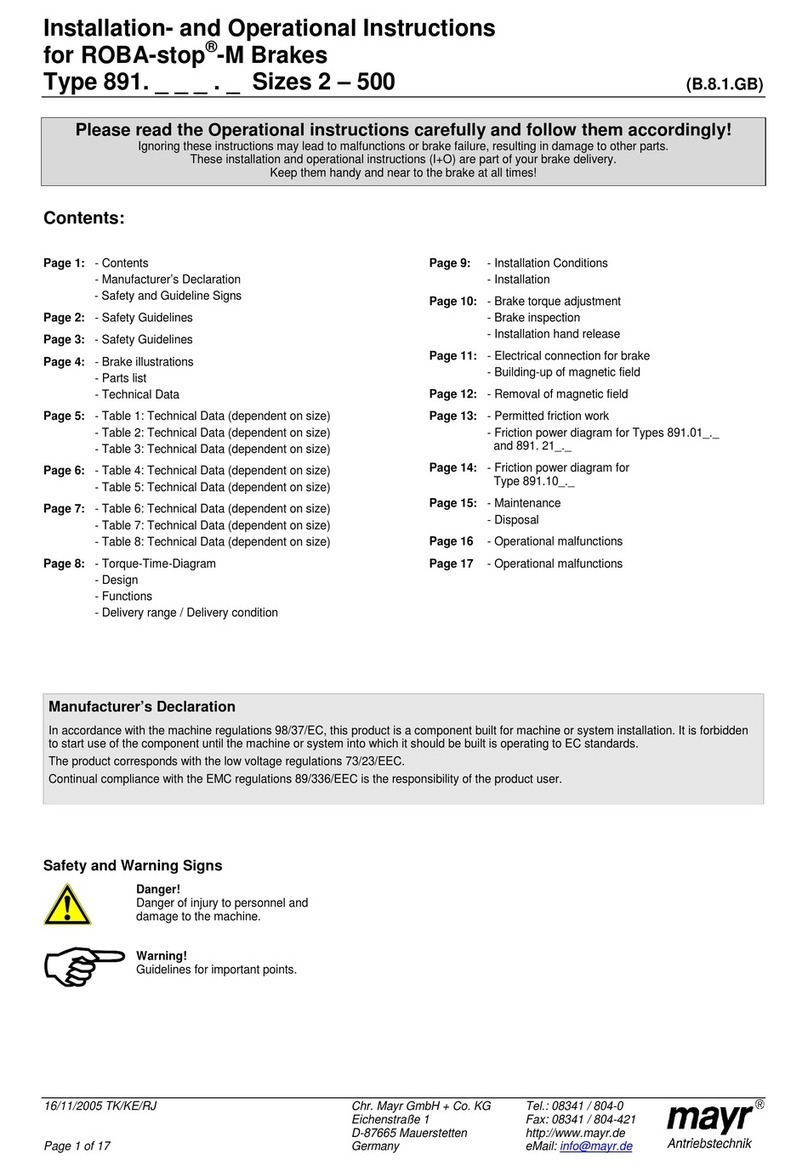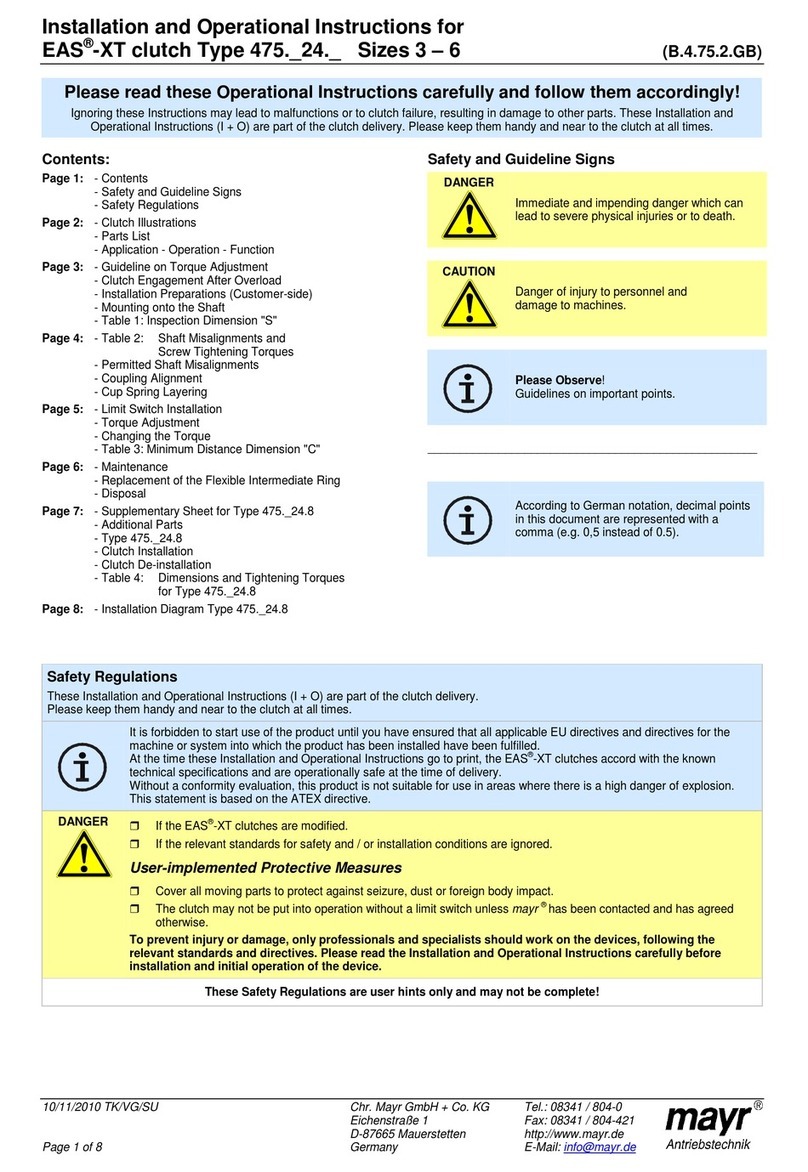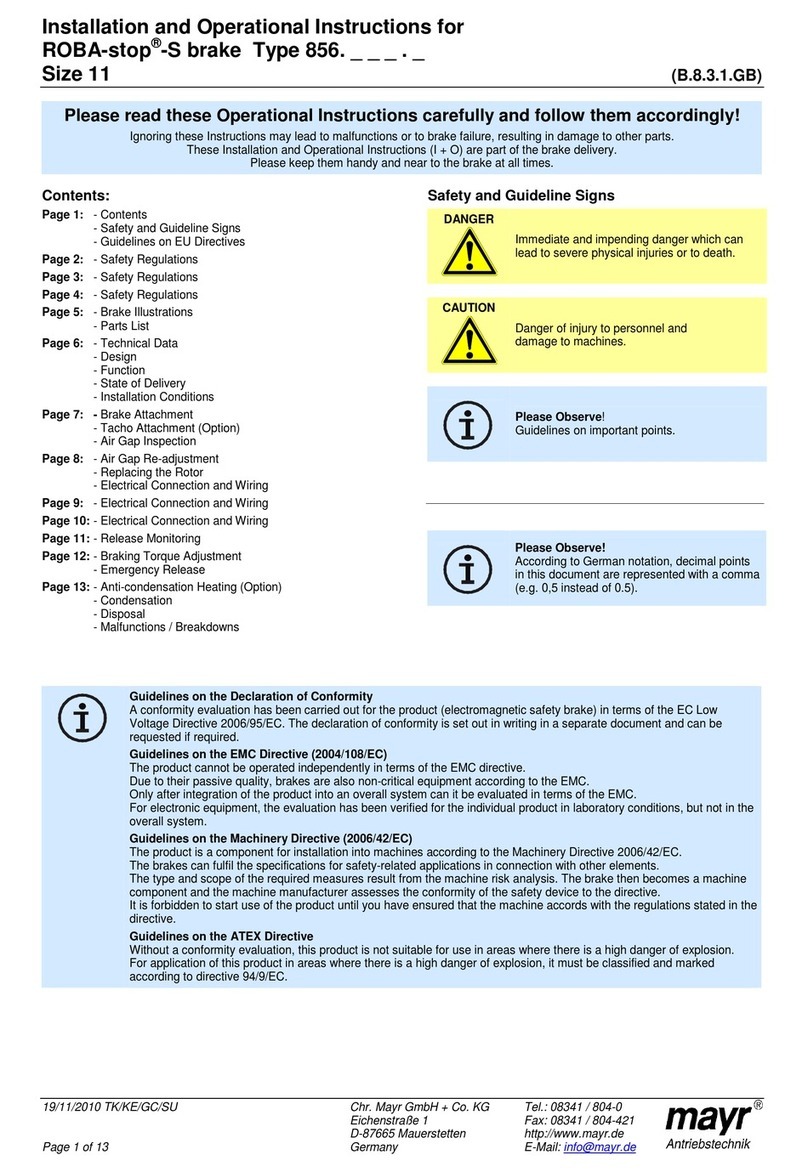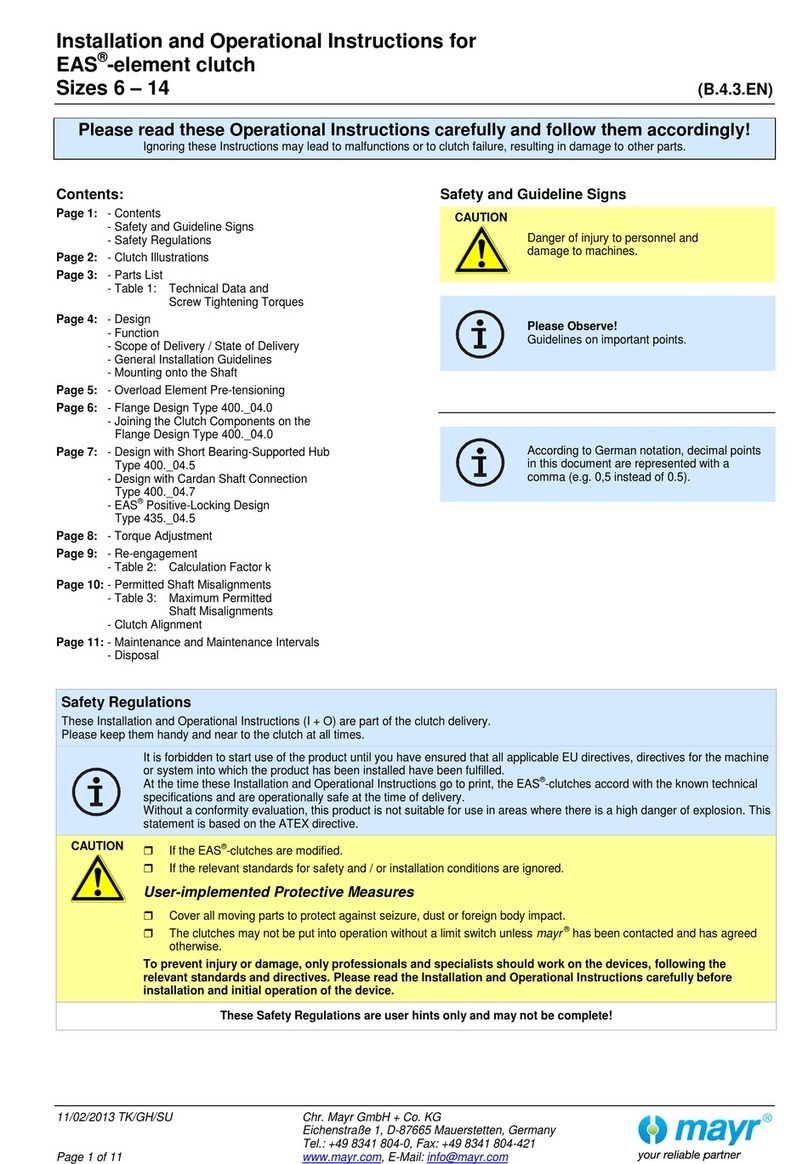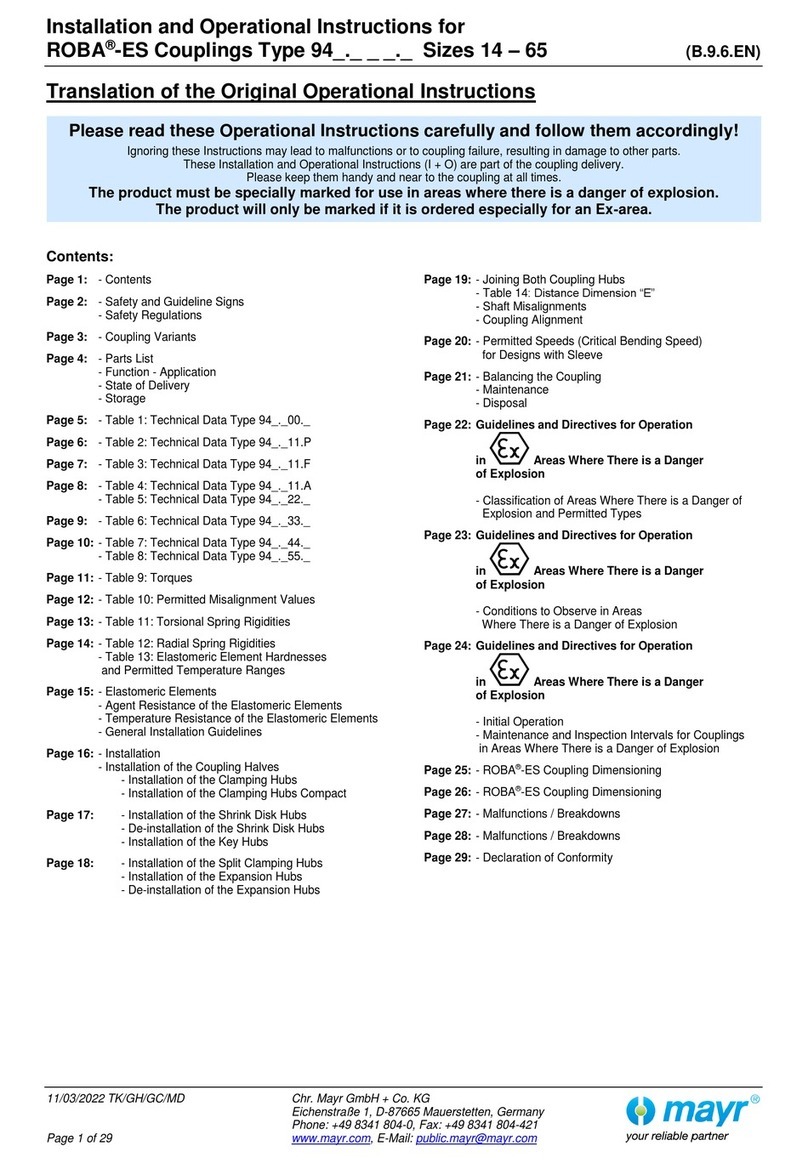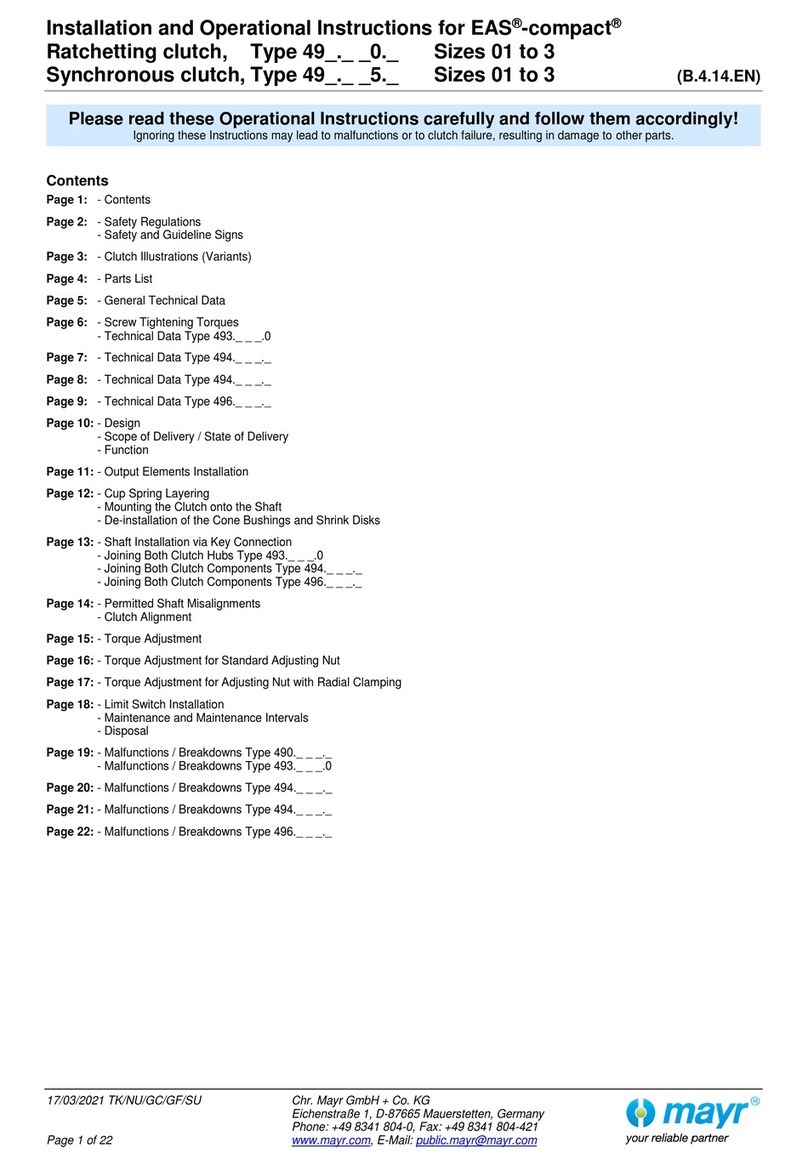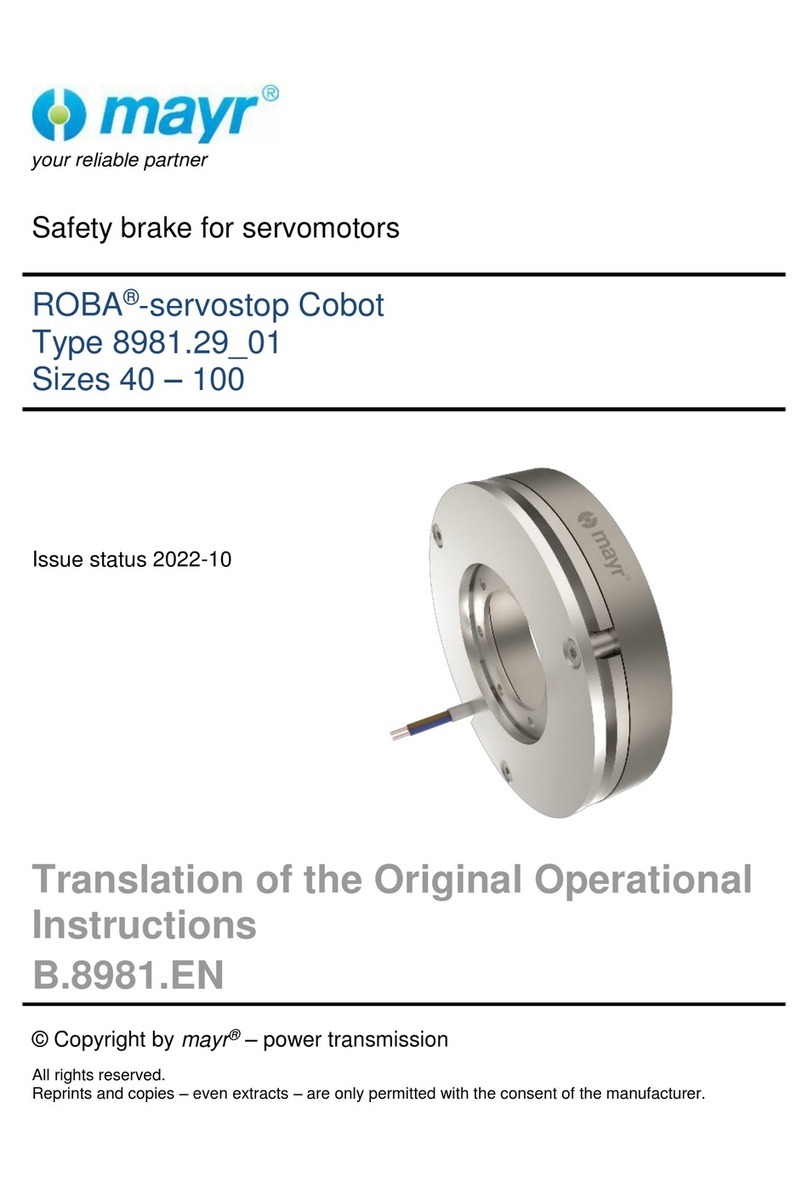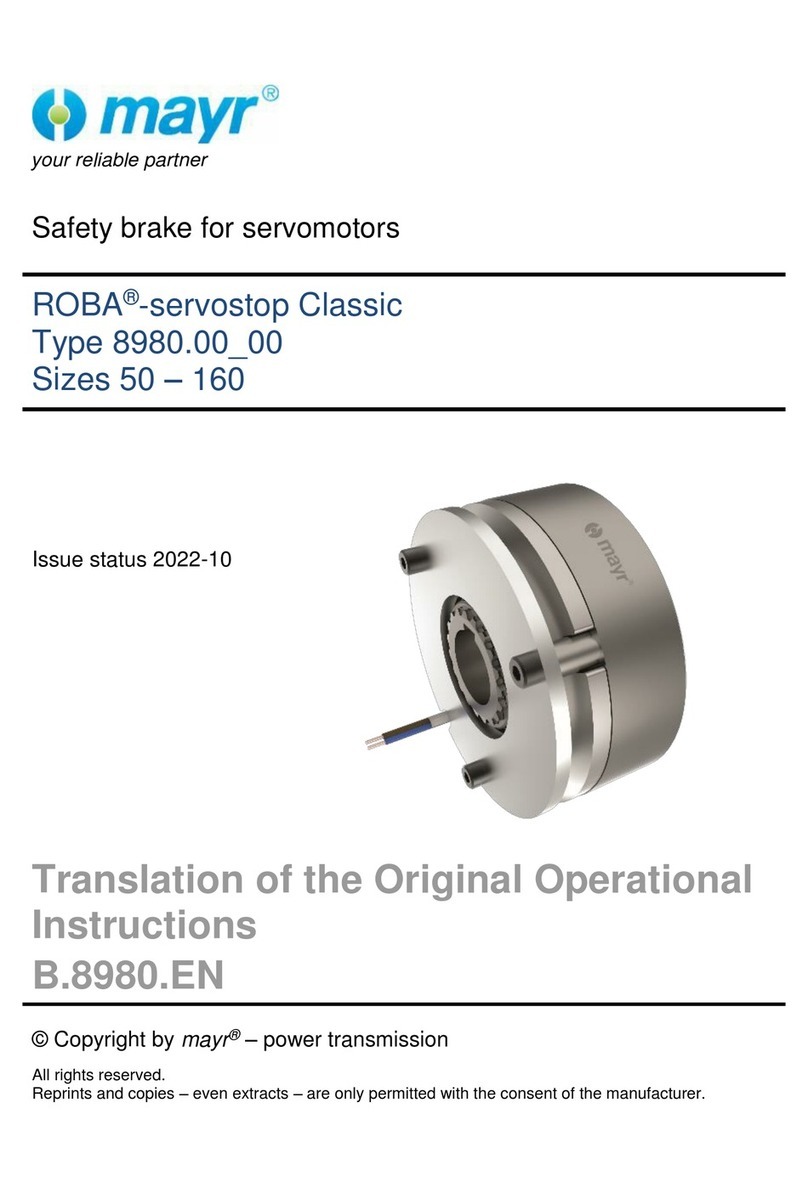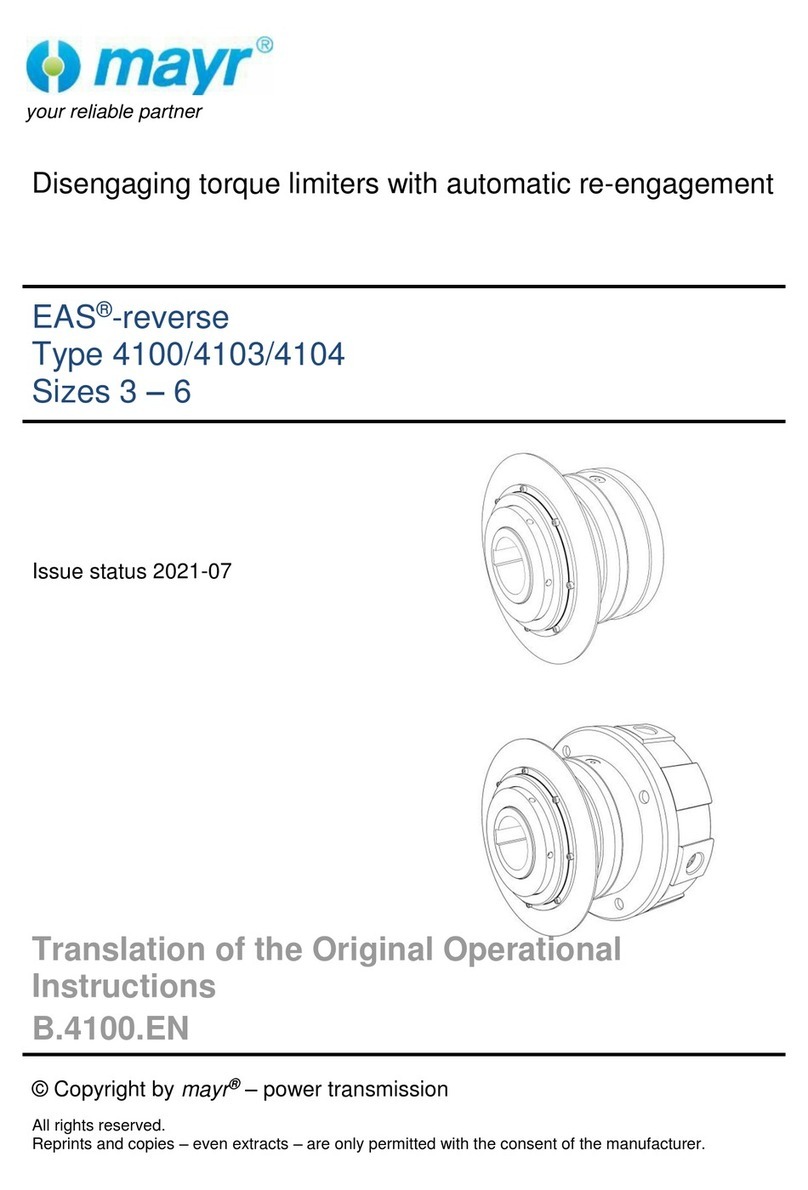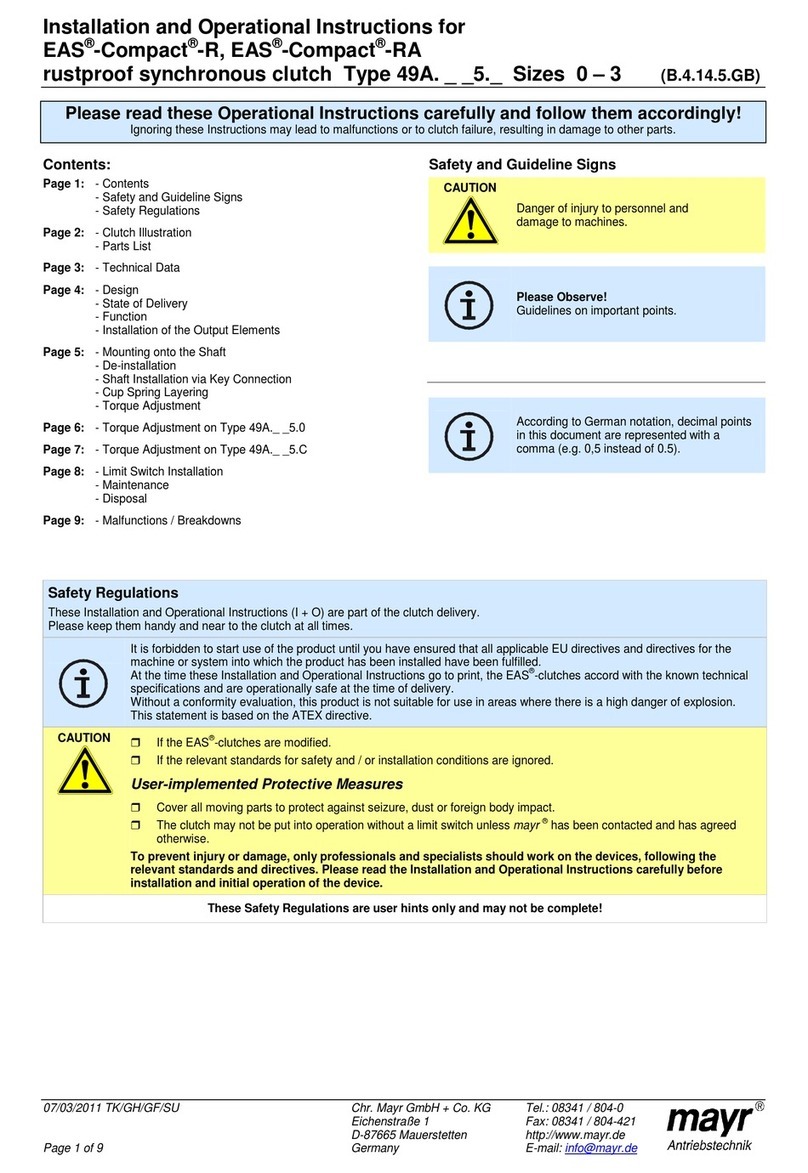
Installation and Operational Instructions for
ROBA-stop®Holding Brake Type 820.61_._ (B.1110.6.GB)
08/02/2010 K/GC/RJ/GF Chr. Mayr GmbH + Co. KG Tel.: 08341 / 804-0
Eichenstraße 1 Fax: 08341 / 804-421
D-87665 Mauerstetten http://www.mayr.de
Installation Conditions
Before mounting the brake, please observe the following
points:
The eccentricity of the shaft end against the mounting pitch
circle may not exceed 0,2 mm (on sizes 3 – 6),
or 0,4 mm on larger brakes.
The positioning tolerance of the thread for the
cap screws (13) may not exceed 0,2 mm.
The axial eccentricity deviation of the screw-on surface to
the shaft may not exceed the permitted axial eccentricity
tolerance according to DIN 42955 R.
The related diameter is the pitch circle diameter of the
brake attachment.
Larger deviations can lead to a drop in torque, to permanent
slipping on the rotor and to overheating.
The tolerances of the hub and the shaft must be selected
so that the hub toothing is not widened (please observe the
maximum join temperature of 200 °C). Widening the
toothing leads to the rotor clamping on the hub and
therefore to brake malfunctions.
(Recommended hub - shaft tolerance H7/k6).
The hub (1) must be positioned so that the
rotor toothing (35) carries holohedrally.
The rotor and the brake surfaces must be free of oil and
grease.
A suitable counter friction surface (steel or cast iron) must
be used. Sharp-edged interruptions on the friction surface
are to be avoided. Recommended surface quality in the
friction surface area: Ra = 1,6 µm.
Friction surfaces made of grey cast iron are to be
rubbed down with fine sandpaper (grain ≈400).
Installation
Mount the gear hub (1) onto the shaft and secure it axially.
Please avoid damage to the toothing.
Mount the gear hub (1) so that the rotor (35) toothing stays
in complete contact even after the friction linings (8) have
become worn.
Push the rotor (35) by hand onto the gear hub (1). The rotor
collar should be facing in the direction of the brake.
Make sure that the toothing moves easily.
Do not cause damage.
Screw on the brake using the fixing screws included in
delivery (13), and secure using spring rings (28).
Check the nominal air gap „a“ according to Table 1. The
nominal air gap must be present.
Observe the screw tightening torques according to Table 1.
The shoulder screws (10) prevent the individual parts from
falling apart. They do not affect the brake function and
should not be removed during installation.
Table 1
ROBA-stop®
size 3 4 5 6 7 8 9 10 11
torque (pos. 13)
[Nm]
3 3 6 8 8 10 10 10 40
Nominal air gap
“a” [mm]
0,20
0,20
0,25
0,25
0,35
0,35
0,40
0,40
0,50
Max. permitted
working air gap*
[mm]
0,30
0,30
0,40
0,45
0,50
0,50
0,50
0,50
0,70
* as the operating temperature increases, the max. air gap can decrease.
Air Gap Adjustment
The working air gap „a“ between the armature disk (5) and the
coil carrier (2) is set manufacturer-side to the nominal dimension,
see Fig. 2 and Table 1.
However, as the rotor (35) wears down, the air gap increases. By
turning the threaded distance ring, (31) it is possible to reset the
nominal air gap. Adjustment must take place at the latest when
the maximum permitted working air gap (acc. Table 1) has been
reached.
Adjustment
1. Take a screw plug out of the threaded distance ring (31).
Measure the air gap before adjustment in de-energised
conditions using a sensor gauge. The difference between
the measured air gap and the nominal air gap „a“ must be
readjusted according to Table 1.
2. Loosen the fixing screws (13).
3. Loosen the clamping bolt (59) and the lock washer (58).
4. Turn the threaded distance ring (31) anti-clockwise (facing
the rear side of the brakes). Turn the distance ring (31) one
graduation line on the imprinted scale. This equals an air
gap adjustment of 0,05 mm on sizes 3 to 6 and of 0,1 mm
on sizes 7 to 11.
5. Tighten the fixing screws (13) and observe the tightening
torques according to Table 1.
6. Tighten the clamping bolt (59).
7. Check the air gap. The nominal air gap „a“ according to
Table 1 must be present.
Re-adjustment can be repeated until the threaded distance ring
(31) lies against the coil carrier (2) collar, see Fig. 2. This contact
prevents unpermitted wear on the rotors (35). If no more re-
adjustment is possible, the rotor (35) must be replaced.
Fig. 2
Braking Torque Adjustment
ROBA-stop®brakes are set manufacturer-side to the braking
torque requested on order. By turning the set screws (14) to the
left, the braking torque is reduced. By turning them to the right,
the braking torque is increased.
During braking torque adjustment, all the set screws (14) must
be adjusted evenly.
Warning!
Do not confuse the set screws (14) with the fixing
screws (13)!
